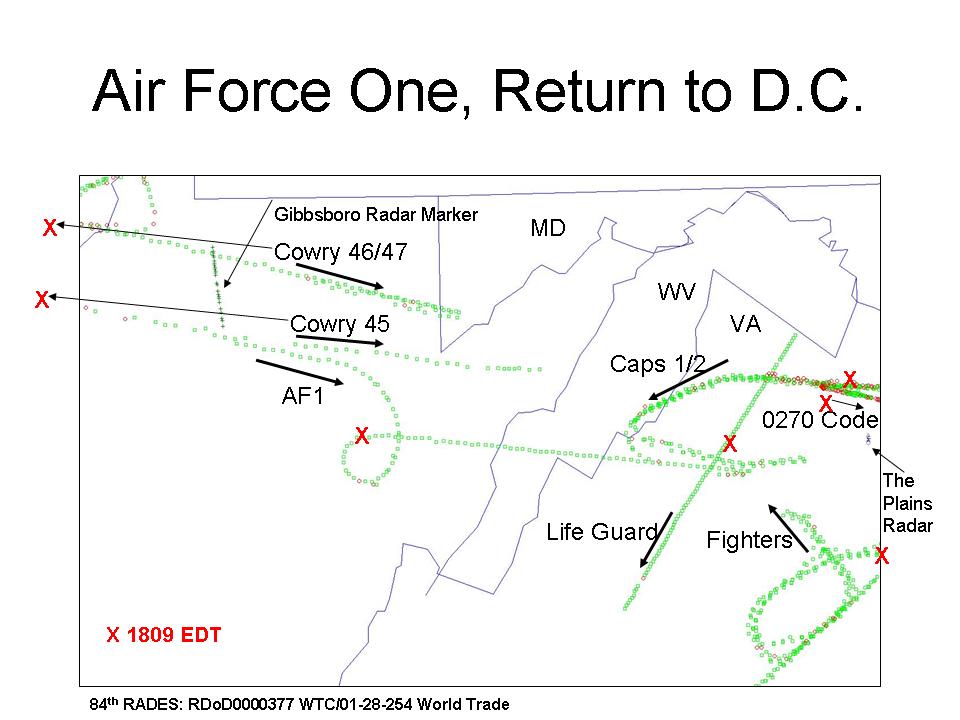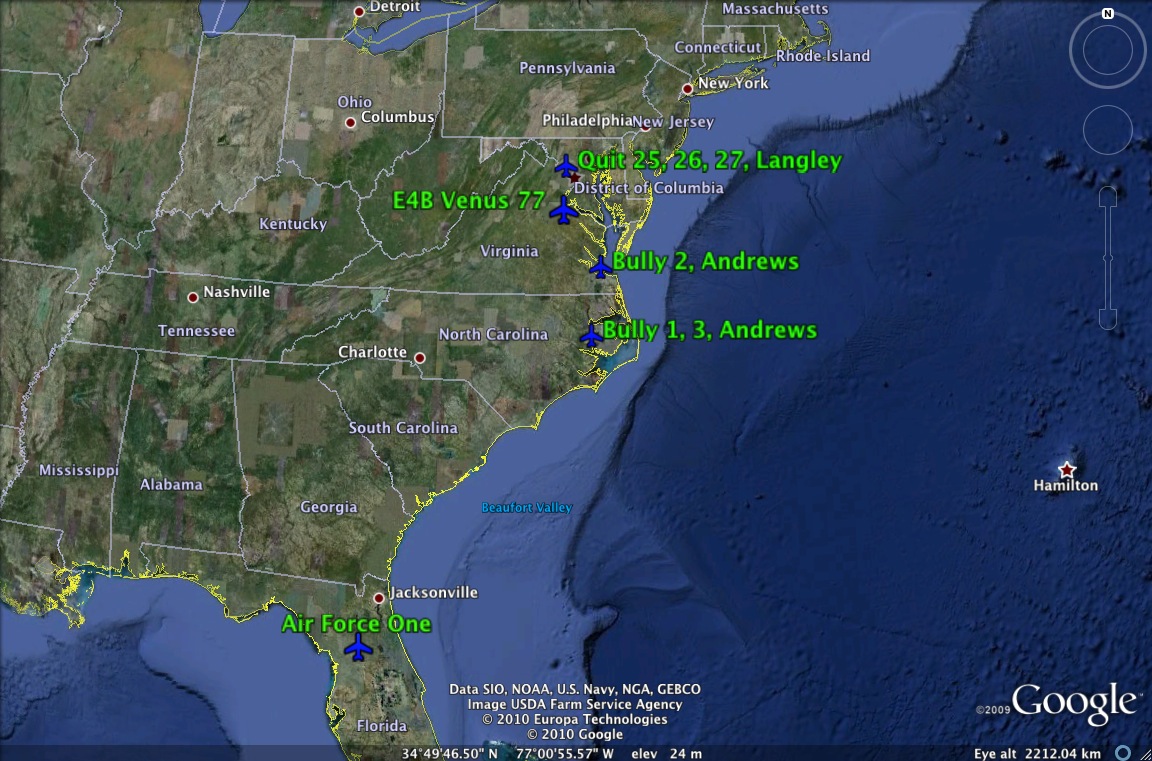Prologue
On September 11, 2012, on the 11th anniversary of 9/11, Anderson Cooper of CNN hosted a wide-ranging discussion about events of that day. Among his guests were two that engaged in a verbal shoving match over the importance of the August 6, 2001, President’s Daily Brief (PDB). Here is how Cooper introduced his guests.
Kurt Eichenwald joins us now. He’s a “Vanity Fair” contributing editor and author of “500 Days: Secrets and Lies in the Terror Wars.” Also with us is Ari Fleischer who is press secretary for President George W. Bush.
Eichenwald took the position that the August 6 PDB was one in a consistent series of such briefings to the President and that a higher level of alert should have been sounded. Fleischer took the position that the PDB, in context, was not specific and that the thrust of reporting was a potential attack overseas.
None of the three–Cooper, Eichenwald, Fleisher–provided any context on what else was going on in the world that year. It was as if that PDB and previous such briefs were the only thing that mattered in the months leading up to 9/11.
A “PDB” was and is a collection of articles, not a single item. Further, the August 6 PDB and its expanded-distribution, executive level version, a August 7 SEIB (Senior Executive Intelligence Brief), did not energize either the President or the Intelligence Community as we might have wished, retrospectively.
Here is additional insight for academicians, historians, and serious researchers to help them understand how things happened in real time that summer.
Introduction
The August 6, 2001, President’s Daily Brief (PDB) item, “Bin Ladin Determined to Strike in US,” has had a long shelf life concerning the events of September 11, 2001. Much has been written and discussed, largely out of context, so that its place in the events leading up to the 9/11 attack has been misconstrued. My purpose here is to place that single PDB article in perspective based on my own work on the Congressional Joint Inquiry. I start, however, with the context provided by the 9/11 Commission in its final report.
The Commission Report.
The President’s Daily Brief is an accumulation of subjects, not a single topic as some of the discourse about the events of 9/11 suggests. It is important, therefore, to explain in quantifiable terms where a single item fits in. Here is what the Commission reported:
Each PDB consists of a series of six to eight relatively short articles or briefs covering a broad array of topics; CIA staff decides which subjects are the most important on any given day. There were more than 40 intelligence articles in the PDBs from January 20 to September 10, 2001, that related to Bin Ladin. The PDB is considered highly sensitive and is distributed to only a handful of high-level officials.
The wording, “more than 40 intelligence articles,” implies a quantity that was not as great as it appears. Additional Commission report language allows a quantitative assessment. Assuming that the PDB was provided six days a week there were 200 briefing days in the period specified. Given that the average number of articles was seven (Commission reported 6-8) there were 1400 “intelligence articles” briefed to the President, 40 of which were Bin Ladin-related. One of every 35 articles was Bin Ladin-related; not quite three in every 100. In the world of statistics and probability the odds were not good that any one article was Bin Ladin-related.
That revelation is not quite so stark, but still grim when we look at the frequency with which the President was briefed about Bin Ladin. Forty articles in 200 days is one in every five days. About once a week. In sum, by measure of either frequency or number, the President was not briefed about Bin Ladin in any actionable, consistent way at his level.
So, what does all this mean and what was happening at a level of the intelligence community that was actionable? And for that we turn to the Senior Executive Intelligence Briefs (SEIB).
Senior Executive Intelligence Briefs (SEIB)
Here is what the Commission report has to say about the SEIB.
The Senior Executive Intelligence Brief (SEIB), distributed to a broader group of officials, has a similar format and generally covers the same subjects as the PDB. It usually contains less information so as to protect sources and methods.
The phrase, “less information,” is a non-specific way of saying that the SEIB, an intelligence product, does not contain law enforcement information. And it is in that specific aspect that the companion SEIB to the PDB, issued on August 7, 2001, contained the same intelligence information as was briefed to the President, but did not contain the last two paragraphs of the PDB concerning FBI information which included these statements:
- …patterns of suspicious activity in this country consistent with preparations for hijackings or other type attacks, including recent surveillance of federal buildings in New York
- …a group of Bin Ladin supporters was in the US planning attacks with explosives.
The qualitative difference between the August 6 PDB and the August 7 SEIB has long been known in the public domain. According to “Source Watch“, Associated Press reporter, John Solomon, had surfaced the existence of the August 7 document on April 13, 2004. “Source Watch” went on to report the following:
Officials, who “would only discuss the senior executives’ memo on condition of anonymity because it remain[ed] classified,” reported that the August 7, 2001, brief did not mention
- “70 FBI investigations into possible al-Qaida activity that the president had been told of a day earlier in a top-secret memo titled…”
- “a threat received in May 2001 of possible attacks with explosives in the United States or
taht that [corrected Mar 15 2014] the FBI had concerns about recent activities like the casing of buildings in New York”
All that begs an obvious question. How did the Intelligence Community react to the August 7 SEIB? The answer is it did not. We turn first to the work of the 9/11 Commission.
The Commission and the SEIB
The Commission was constrained in page count for its final report in order to meet publisher requirements. One result was that some information was pushed to the end notes and those notes, themselves, were reduced in font to allow increased content. It is in the end notes to Chapter 8, “The System Was Blinking Red” that the story of the August 6 PDB and August 7 SEIB is told.
Footnote 3 details the scope of the effort.”The CIA produced to the Commission all SEIB articles related to al Qaeda, Bin Ladin, and other subjects identified by the Commission as being relevant to its mission from January 1998 through September 20, 2001.”
Footnote 37 explains how the PDB, itself, was drafted.
The CTC [Counter-terrorism Center] analyst who drafted the briefing drew on reports over the previous four years. She also spoke with an FBI analyst to obtain additional information. The FBI material ws written up by the CIA analyst and included in the PDB. A draft of the report was sent to the FBI analyst to review. The FBI analyst did not, however, see the final version, which added the reference to the 70 investigations.
The footnote continued, “Because of the attention that has been given to the PDB, we have investigated each of the assertions mentioned in it.” We learn, for example, that, “The only information that actually referred to a hijacking…was a walk-in at an FBI Office in the United States…The source was judged to be a fabricator.”
We further learn that, “The 70 full-field investigations number was a generous calculation that included fund-raising investigations…Many of these investigations should not have been included.”
Footnote 38 explains the difference between the PDB and the SEIB. “The Deputy Director of Central Intelligence testified that the FBI information in the PDB was omitted from the SEIB because of concerns about protecting ongoing investigations, because the information had been received from the FBI only orally, and because there were no clear, established ground rules regarding SEIB contents.”
We now turn to my work on the Joint Inquiry staff for additional insight into the impact of the difference between the PDB and the SEIB articles.
Congressional Joint Inquiry Staff Work
I was on the Other Agency team for the Inquiry. Teams were dedicated to and had office space at CIA, NSA, and the FBI. Another team did the historical review across all agencies. The Other Agency team responsibility included all of DoD, less NSA, and the Departments of Energy, State, Transportation and Treasury.
Early in our work, we determined that the volume of intelligence reporting on terrorism/counter-terrorism during 2001 was not great, on the order of a few percentage points, never more than five percent at peak. That fact caused one Representative to finally ask a rhetorical question to the room at large, “would someone please tell me what the other 95% is.” The Inquiry staff took that for action and I did the staff work.
We asked for and received all the SEIB for the period Mar 1-Sep 10, 2001. That universe of documents was a reasonable approximation of the PDB, less law enforcement information, as the Commission reported. We did not have access to the PDB. Concurrently, we asked for and received all the the Chairman, Joint Chiefs of Staff, intelligence briefings for the same period. My work was compiled in a memo to the Representative signed by the, then, Staff Director, Eleanor Hill. A copy was archived in my staff work files at the conclusion of our work.
Earlier, I mentioned Commission Report footnote 3 to Chapter 8. That footnote implies that I had a larger universe of SEIB reporting for the spring/summer 2001 available to me than did the Commission. I had 100% of the SEIB during the period of my interest because the analytical question was what else was going on. The Commission staff’s focus was different, they wanted to analyse analyze [Corrected Mar 15, 2014] the narrower universe of reporting specific to Bin Ladin and al Qaeda.
SEIB Analysis
I looked at all articles in all SEIBs for the period of interest. I then counted each article in several different categories, mostly geographic (e. g. China, Southern Europe, Russia) but including a specific category for terrorism/counter-terrorism articles, including those mentioning Bin Ladin.
There were routinely articles of interest in areas where the US had troops in harms way; Operations Northern Watch and Southern Watch, for example. There were altogether about a dozen categories so no one category contained a majority of the reporting. However, there was a strong plurality for one category, China.
An aggressive, assertive China was high on the interest list during 2001 prior to 9/11. Readers will recall that, apart for from [corrected Mar 15, 2014] economic and political concerns about China, there was a serious incident that year. On April 1, 2001, China forced down a US reconnaissance aircraft and held the crew hostage for several days, a serious international event with potentially explosive ramifications.
There were many things on the nation’s intelligence plate. Protection of US forces in harms way and concern about China competed with the emerging Bin Ladin threat for attention. As did a resurgent Russia. For insight into that threat we turn to the Chairman, Joint Chiefs of Staff (CJCS) daily intelligence briefings.
CJCS Daily Intelligence Briefings
The Chairman’s briefings were provided to us by the Defense Intelligence Agency in power point form on compact discs, which were archived in my Inquiry work files. First, let’s consider how the subject of terror/counter-terror was briefed to senior military officials.
The terrorist threat was briefed on a single slide once a week. The content was static, unchanged, before the spike in terrorist threat reporting. As the reporting increased the content of the slide became dynamic, changing each week and then the frequency changed to more than once a week. That content and frequency change lasted through the period of peak intelligence reporting.
Thereafter, in August, the briefing item returned to its previous steady state. The immediate threat had passed and attention was turning elsewhere. JCS concerns during the peak reporting period were for the safety of US troops abroad, readiness (spread of hoof and mouth disease), and, unprecedented in recent memory, Russian military activities.
A Resurgent Russia
Typically, CJCS briefing items contain an assessment as the last bullet on the last slide. Such assessments for Russian military activities were alarming. Examples included:
- First such activity in a decade
- First such activity since the end of the Cold War
- First such activity since the collapse of the Former Soviet Union
Of concern were threats to US reconnaissance aircraft and, significantly, increased scope of activity of scheduled annual Russian military exercises. Of particular concern was the first ALCM (air-launched cruise missile) live-fire exercise in many years, scheduled for September 11, 2001. Even though the exercise was properly announced and a NOTAM (notice to airmen and marines) filed, the activity had the attention of the US Government, military and civilian.
Ben Sliney, the Federal Aviation Administration’s National Operations Manger at the Air Traffic Control System Command Center was among those paying close attention. 081709 Oakland Sliney Russian Missile Shot
General Myers, Assistant Chairman, Joint Chiefs of Staff, took the morning CJCS intelligence briefing. Included in the briefing file for that day was a slide depicting the ALCM threat to CONUS, complete with range arcs for fueled and un-fueled ranges for the launch aircraft. That was the threat to the Pentagon briefed to General Myers by 7:30 EDT that morning.
A little over two hours later a very different threat aircraft, a commercial airliner flown as a missile, slammed into the West side of the Pentagon. It was a “New Type of War,” unrecognized before the fact.
Recognition of the threat on 9/11 at the National Military Command Center (NMCC)
DoD released late last year (2013) a transcript of the Air Threat Conference convened by the NMCC on the morning of 9/11. Even though heavily redacted, the release provides explicit detail of the national level awareness of the threat just before American Airlines 77 struck the Pentagon.
This is [redacted] DDO at the NMCC. An air attack against North America may be in progress. The vice Chairman is in this conference…NORAD, what is the situation? NORAD: Copy, National. This is NORAD. We have radar and visual indication of a possible threat to CONUS. Unknown country of origin.
By now the reader should still have this question in mind. Why was the Intelligence Community not energized by the 6 August PDB and the companion 7 August SEIB, concerning the actual threat, not the threat as perceived as late as 9:35 EST on September 11, 2011 2001 [corrected Mar 12, 2014]. The devil is in the details.
The SEIB Coordination Process
Senior Executive Intelligence Briefing items were generally coordinated in the evenings before publication with at least the five major agencies, three all-source agencies (CIA, DIA, State) and two single-source agencies (National Imagery Mapping Agency and National Security Agency). Articles could proceed to publication without coordination. A line at the bottom of each article listed the coordination.
Neither DIA nor State Department coordinated on the 7 August SEIB article concerning Bin Ladin. Twice, on consecutive evenings, DIA refused to coordinate for specific reason.
There was no documentation for the State Department lack of coordination. The evidence was that State was not listed on the coordination line.
The DIA refusal is documented in the logs of the National Military Intelligence Center (NMIC) for the desks of the Duty Director of Intelligence, Team Chief, and Terrorism Analyst as obtained by the Joint Inquiry Staff and archived in its document collection.
Joint Inquiry Staff twice interviewed DIA supervisors responsible for the refusal to coordinate. Their answer was straight forward, simple, and understandable. There were two reasons.
- The intelligence content was nothing more than an historical summary
- The title did not match the content
The CIA used the same title for both the 6 August PDB and the 7 August SEIB. Without the law enforcement content, the title made no sense to DIA and they could not concur in the SEIB article as presented to them for coordination.
It was the ultimate, even fatal manifestation of the “Wall” between intelligence and law enforcement information. The President was briefed on a threat which the major players in the Intelligence Community did not receive. The President and the Community did not, in military terms, share a common operating picture of the battlefield.
“For want of a nail…”



